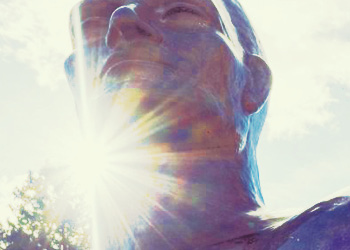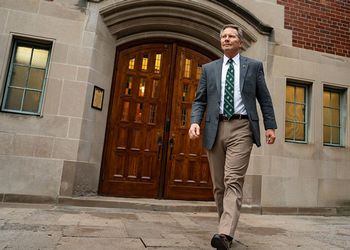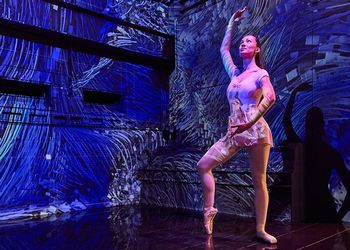Time Travel the Old-Fashioned Way

The ladies wore long, flowing dresses and wide-brimmed hats. The men donned suits and formal hats and carried walking canes. Together, they strolled across sweeping lawns and passed through manicured gardens, all under the shadows of elegant Collegiate Gothic architecture.
The time? The turn of the 19th century. The place? Michigan Agricultural College, now Michigan State University.
Now, you too, can experience the sights of that time thanks to a new book featuring historical postcards. Drawn from the collections of three university administrators, Michigan Agricultural College Campus Life 1900-1925: A Postcard Tour is being hailed as a “vibrant time capsule” by historians and the Spartan faithful.
With a turn of the pages, you’ll find the old trolley station, the brick-solid U.S. Weather Bureau building and the white clapboard post office, which resembled a house. While you’re there, take in the striking president’s house with its mansard roof. And peer inside what was once called the Women’s Building, with its fern- and statue-adorned lobby, grand piano and wicker chairs.
Join your sweetheart for a canoe glide on the Red Cedar River. Take in a baseball game at the athletic field. Then wander over to the MAC’s livestock farms.
The book’s images come from the postcard collections of three MSU associates whose on-campus tenures and positions give them deep knowledge of this place and its evolution. Of them, it was Stephen Terry of Williamston who carried the book over the finish line once the pictures were gathered together. A 1960 graduate of the Eli Broad College of Business, he rose to become MSU’s assistant vice president of finance, logging a 31-year career prior to his 1997 retirement.
Terry said he’s been hooked on MSU ephemera since the age of 17, when he was accepted into MSU and his grandmother bestowed to him a thin 1877 annual student catalogue that listed his great-grandfather among the graduates.
“I’ve always been interested in MSU history,” Terry said. “I love the campus. The idea that it should be beautiful goes way back to the very beginning” when it was reclaimed swampland.
An accountant-turned-campus-historian, Terry has amassed an estimated 1,000 cards. He started collecting in earnest some 30 years ago, tagging along with his wife to antique sales, where one or two postcard dealers usually set up shop.
Back then—at just 50 cents a throw—postcards made for compact memorabilia, he said. Today, cards fetch much more because collectors have already snapped up those most coveted. Typically, they’re from the golden years of the photo medium, considered the early 20th century. In those days, some commercial photographers roamed from town to town, capturing images of landmarks, scenes and people.
Precision printing was handled in Germany, then home to some of the world’s finest presses, which were later destroyed in World War I.
Not long after, it seemed anyone with a camera could take film to a lab to be printed on U.S. Postal Service-approved postcard stock. What eventually followed were mass-produced, glossy cards like those you’d send while on vacation today. “But they’re not terribly interesting to me,” Terry said.
Regardless of when they appeared, postcards were the social media of their time. Popular and affordable, they were a cheap way to message and entertain family and friends.
Terry’s book includes some of those priceless notes.
For instance, there’s one with an East Lansing postmark, sent by “A.G.” to an apparent friend, dated Nov. 14, 1910. “Well, Frank, I suppose you are still going to Rankletown school. You had ought be out here having one—of a time.
This is way ahead of Rankin in every way.” On the front: a sepia-tone photograph of students in their finery walking between College Hall, Williams Hall and the Chemical Laboratory MAC.
The book memorializes campus buildings, all but a dozen of which are just memories, as well as drilling military groups, rough-and-tumble freshman class competitions and special sites—along with short histories. Additional features in the 136-page, roughly eight-by-ten-inch coffee-table book include older campus maps, keyed with building names and locations.
Today, Terry still scouts for old campus postcards. But he’s far more selective. He’s looking for cards missing from the numbered sets that include multiple cards. And he keeps an eye out for near-perfect cards picturing MSU events or landscapes.
The latter would include such cards as his fairly recent $75 eBay purchase. It’s a rare panoramic photograph showing a sea of well-dressed MAC students, alumni and local residents. They’re pressed together as far as the eye can see to catch President Theodore “Teddy” Roosevelt’s address at the MAC’s 50th Anniversary Celebration and “graduating exercises” on May 31, 1907.
The momentum for the book came at the suggestion of Thunder Bay Press in Holt. So about two years ago Terry and his two collector-friends began selecting the cards they felt should be featured. A year later, the printer came calling for captions and explanatory text.
“That’s the point where I lost my colleagues,” Terry said with a chuckle. He soldiered on, drilling into the slew of MSU-related books he’s acquired. “I spent my whole career on campus and it was surprising to find a number of things I did not know,” he said of his alma mater.
The project “took two years and far more time than I’d planned on,” Terry said with a laugh. “This may be my whole publishing career.”?



